In this section, you will find some important readings related to the idea of power in general, and Asian economic power in particular. This list does not pretend to be exhaustive in any way. It is merely a modest suggestion to dive deeper into this fascinating subject… Enjoy !

This book focuses on ascertaining what distinguishes the Cold War that the U.S. sustained with the USSR from the one now emerging with China. By comparing their characteristics, it elaborates on how well prepared the US is to undertake this fresh challenge. In doing so, the book analyses six fundamental differences between both cold wars; ideology, alliances, strategic consistency, military, economics, and containment. While the configuration of factors benefited the US during its first Cold War, they now point in the opposite direction. While the first Cold War was instrumental in projecting the US to the pinnacle, the second can only accelerate its dwindling.
“Alfredo Toro Hardy has written a most important and timely book on the growing Sino-American geopolitical contest. Set against America’s previous Cold War rivalry with the Soviet Union, Toro Hardy provides fresh insights and much-needed balance to America’s most important geopolitical relationship in the coming years”.
Kishore Mahbubani, former President of the U.N. Security Council, founding Dean of the Lee Kuan Yew School of Public Policy at NUS and author of Has China Won?
“This is a most compelling and comprehensive analysis of the significant changes in the world order during the current century. Toro Hardy shows how the influence of major powers is shifting and makes a substantial contribution to the understanding of modern international policy”.
Nestor Osorio, former President of the U.N. Security Council and of the U.N. Economic and Social Council.
“This book is a continuation of Toro Hardy’s intellectual efforts to unravel the US-China hegemonic struggle and its emerging trajectories. It is a great addition to the ongoing debate on this subject”.
T.V. Paul, James McGill Professor of International Relations at McGill University and author of Restraining Great Powers.
“Toro Hardy’s excellent book provides new insights into the emerging Cold War between the U.S. and China and its impact on the international system. His solid analysis on how the key pillars of power and influence are shifting is supported by an impressive review of scholarly literature”.
Francisco Villagrán de León, Professor of the George Washington University’s School of International Affairs and former Ambassador to the U.S. and the U.N. (New York and Geneva).
Summary of the book by the author here.
America’s Two Cold Wars. From Hegemony To Decline?, Alfredo TORO HARDY, Palgrave Macmillan, 2022
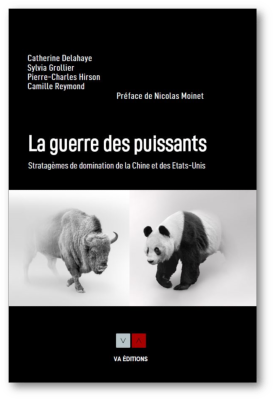
La Chine et les États-Unis se livrent à une guerre économique ouverte depuis les années 2010, et pas seulement… Les présidents Obama, puis Trump et désormais Biden cherchent à restaurer la suprématie américaine émoussée dans tous les domaines. En parallèle, le président chinois Xi Jinping pose en objectif de rendre la Chine prépondérante à l’horizon 2050, retrouvant ainsi le lustre de l’Empire du Milieu.
Ces confrontations économiques et industrielles ont bien évidemment des répercussions sur les autres champs d’affrontement que sont la politique et la diplomatie, la R&D, la finance, les territoires, le militaire et la société civile. Ces champs ne sont que partiellement traités dans les médias occidentaux, mais sont inextricablement liés.
Cet ouvrage est le seul à décrypter de manière globale l’affrontement actuel entre la Chine et les États-Unis sur l’ensemble des échiquiers économique, politique et sociétal. Il expose en détail l’enchaînement des nombreux mécanismes et leviers mis en place et utilisés par les deux protagonistes afin d’obtenir l’ascendant sur le monde matériel et immatériel. Il permet enfin de mesurer l’étendue de cette confrontation, mettant en lumière que chaque événement n’est pas le fruit du hasard, mais bien celui d’une stratégie pensée et réfléchie avec des enjeux longtemps restés cachés.
Une plongée éclairée qui vous permettra de découvrir la partie immergée de l’iceberg !
Summary of the book by the author here.
La guerre des puissants. Stratagèmes de domination de la Chine et des Etats-Unis, Catherine DELAHAYE, Pierre-Charles HIRSON, Sylvia GROLLIER & Camille REYMOND, VA Editions, 2022
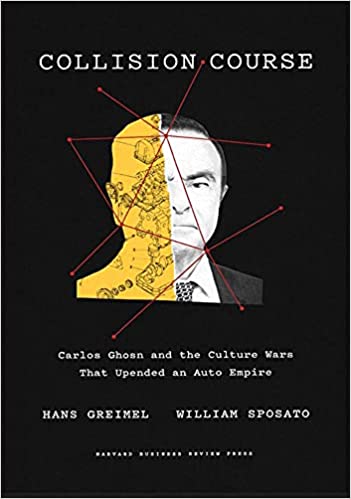
In Japan it’s called the “Ghosn Shock”—the stunning arrest of Carlos Ghosn, the jet-setting CEO who saved Nissan and made it part of a global automotive empire.
Even more shocking was his daring escape from Japan, packed into a box and put on a private jet to Lebanon after months spent in a Japanese detention center, subsisting on rice gruel.
This is the saga of what led to the Ghosn Shock and what was left in its wake. Ghosn spent two decades building a colossal partnership between Nissan and Renault that looked like a new model for a global business, but the alliance’s shiny image fronted an unsteady, tense operation. Culture clashes, infighting among executives and engineers, dueling corporate traditions, and government maneuvering constantly threatened the venture.
Journalists Hans Greimel and William Sposato have followed the story up close, with access to key players, including Ghosn himself. Veteran Tokyo-based reporters, they have witnessed the end of Japan’s bubble economy and attempts at opening Japan Inc. to the world. They’ve seen the fraying of keiretsu, Japan’s traditional skein of business relationships, and covered numerous corporate scandals, of which the Ghosn Shock and Ghosn’s subsequent escape stand above all.
Expertly reported, Collision Course explores the complex suspicions around what and who was really responsible for Ghosn’s ouster and why one of the top executives in the world would risk everything to escape the country. It explains how economics, history, national interests, cultural politics, and hubris collided, crumpling the legacy of arguably the most important foreign businessman ever to set foot in Japan.
This gripping, unforgettable narrative, full of fascinating characters, serves as part cautionary tale, part object lesson, and part forewarning of the increasing complexity of doing global business in a nationalistic world.
Collision Course. Carlos Ghosn and the Culture Wars That Upended an Auto Empire, Hans GREIMEL & William SPOSATO, Harvard Business Review Press, 2021
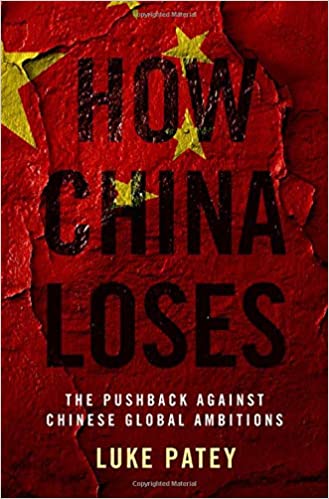
A critical look at how the world is responding to China’s rise, and what this means for America and the world.
China is advancing its own interests with increasing aggression. From its Belt and Road Initiative linking Asia and Europe, to its “Made in China 2025” strategy to dominate high-tech industries, to its significant economic reach into Africa and Latin America, the regime is rapidly expanding its influence around the globe. Many fear that China’s economic clout, tech innovations, and military power will allow it to remake the world in its own authoritarian image. But despite all these strengths, a future with China in charge is far from certain. Rich and poor, big and small, countries around the world are recognizing that engaging China produces new strategic vulnerabilities to their independence and competitiveness.
How China Loses tells the story of China’s struggles to overcome new risks and endure the global backlash against its assertive reach. Combining on-the-ground reportage with incisive analysis, Luke Patey argues that China’s predatory economic agenda, headstrong diplomacy, and military expansion undermine its global ambitions to dominate the global economy and world affairs. In travels to Africa, Latin America, East Asia and Europe, his encounters with activists, business managers, diplomats, and thinkers reveal the challenges threatening to ground China’s rising power.
At a time when views are fixated on the strategic competition between China and the United States, Patey’s work shows how the rest of the world will shape the twenty-first century in pushing back against China’s overreach and domineering behavior. Even before the COVID-19 pandemic, many countries began to confront their political differences and economic and security challenges with China and realize the diversity and possibility for cooperation in the world today.
How China Loses. The Pushback Against Chinese Global Ambitions, Luke PATEY, Oxford University Press, 2021
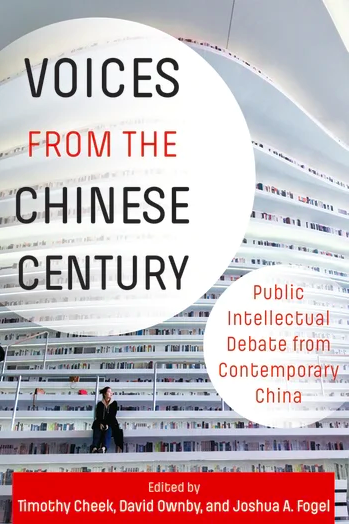
China’s increasing prominence on the global stage has caused consternation and controversy among Western thinkers, especially since the financial crisis of 2008. But what do Chinese intellectuals themselves have to say about their country’s newfound influence and power? Voices from the Chinese Century brings together a selection of essays from representative leading thinkers that open a window into public debate in China today on fundamental questions of China and the world—past, present, and future.
The voices in this volume include figures from each of China’s main intellectual clusters: liberals, the New Left, and New Confucians. In genres from scholarly analyses to social media posts, often using Party-approved language that hides indirect criticism, these essayists offer a wide range of perspectives on how to understand China’s history and its place in the twenty-first-century world. They explore questions such as the relationship of political and economic reforms; the distinctiveness of China’s history and what to take from its traditions; what can or should be learned from the West; and how China fits into today’s eruption of populist anger and challenges to the global order. The fifteen original translations in this volume not only offer insight into contemporary China but also prompt us to ask what Chinese intellectuals might have to teach Europe and North America about the world’s most pressing problems.
Voices From the Chinese Century. Public Intellectual Debate From Contemporary China, Timothy CHEEK, David OWNBY & Joshua A. FOGEL (ed.), Columbia University Press, 2019
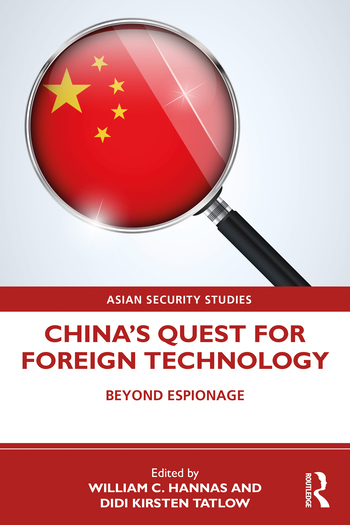
This book analyzes China’s foreign technology acquisition activity and how this has helped its rapid rise to superpower status.
Since 1949, China has operated a vast and unique system of foreign technology spotting and transfer aimed at accelerating civilian and military development, reducing the cost of basic research, and shoring up its power domestically and abroad—without running the political risks borne by liberal societies as a basis for their creative developments. While discounted in some circles as derivative and consigned to perpetual catch-up mode, China’s “hybrid” system of legal, illegal, and extralegal import of foreign technology, combined with its indigenous efforts, is, the authors believe, enormously effective and must be taken seriously. Accordingly, in this volume, 17 international specialists combine their scholarship to portray the system’s structure and functioning in heretofore unseen detail, using primary Chinese sources to demonstrate the perniciousness of the problem in a manner not likely to be controverted. The book concludes with a series of recommendations culled from the authors’ interactions with experts worldwide.
This book will be of much interest to students of Chinese politics, US foreign policy, intelligence studies, science and technology studies, and International Relations in general.
China’s Quest for Foreign Technology. Beyond Espionage, William C. HANNAS & Didi Kirsten TATLOW (ed.), Routledge, 2020

This book is literally a first of a kind and ground-breaking in its intent. The intent of this book is to give national security professionals and other interested parties a baseline understanding of narrative and its principles regarding the potential for predictably triggering behavior. In order to succeed on the battlefield of influence, understanding narrative is an imperative.
This introductory study guide describes methods, from strategic to tactical, to win Narrative Warfare. The authors begin by defining narrative and its four components. They then move to a description of offensive and defensive narratives and then provide details about the specific type of Narrative Identity Analysis of the target audience that will be necessary in order to put together a comprehensive Narrative Strategy. They demonstrate how to trigger identities and frame events in order to completely dominate in Narrative Warfare.
Introduction to Narrative Warfare. A Primer and Study Guide, Ajit MAAN & Paul COBAUGH, CreateSpace Independent Publishing Platform, 2018
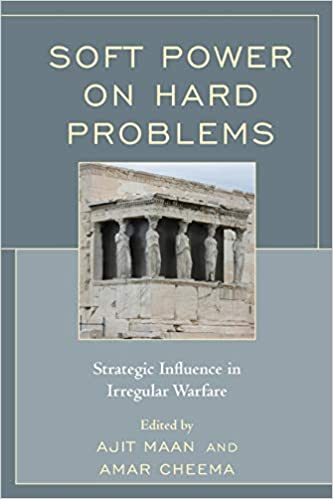
The authors of this book are uniquely qualified to analyze the contemporary security landscape and promote necessary and pressing change. Each is a thought leader in his or her field. Four out of six authors are seasoned military professionals who share the view that the over-reliance on kinetic approaches over influence operations account for some of the failures of nations against extremists. Combined with civilian academic leadership this book is a practice in military civics. This collection of international perspectives, taken together, challenge commonly held assumptions and outmoded paradigms of engagement.
Soft Power on Hard Problems. Strategic Influence in Irregular Warfare, Ajit MAAN & Amar CHEEMA (ed.), Hamilton Books, 2016
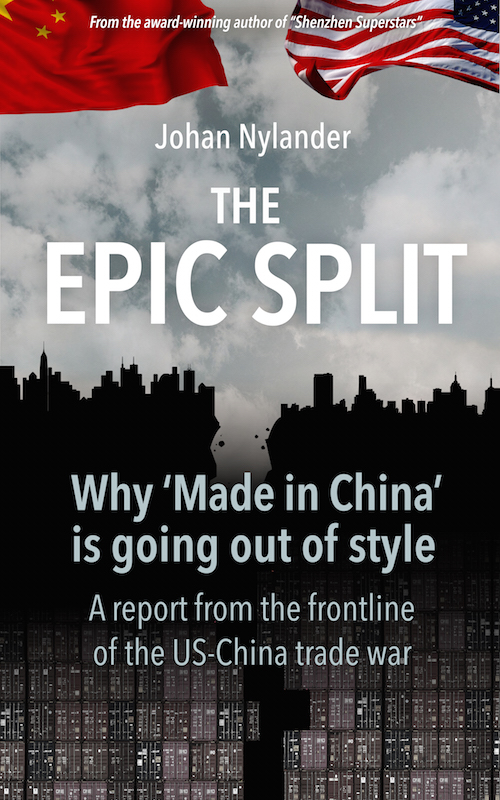
This book is about the greatest break-up the world has ever seen.
The conflict between the world’s two biggest economies is far from being just about trade. It’s a fierce and escalating battle between two ideologies. If the past decades were characterized by globalization, the next may well be all about decoupling: the disintegration of the relationship between the US and China.
Companies are leaving China, no question. And consumers around the world say they prefer products not made there. It’s clear that ‘Made in China’ is going out of fashion.
However, this is not a book about the world going up in flames. It’s about change and opportunities. For China, the conflict has given new urgency to the need to modernize its economy and become more self-reliant in technology. For international companies and for governments around the world, it has been a wake-up call to cut dependency on Chinese supply chains, against a backdrop of rising consumer skepticism toward China. The world’s biggest maker of mobile phones, Samsung Electronics, recently closed down its last factory in China. More will follow.
Summary of the book by the author here.
The Epic Split. Why “Made in China” Is Going Out of Style, Johan NYLANDER, Independently published, 2020
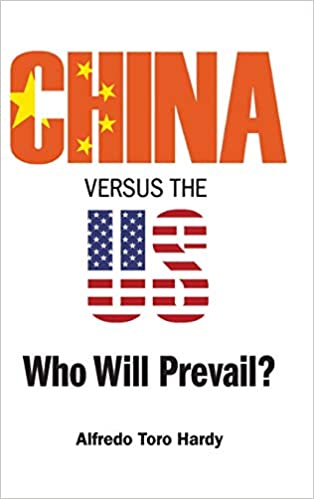
The heralding of ambitions and hardening of geopolitical and military stances by China has given rise to few questions: Did China challenge the United States too hard and too soon and, by doing so, seriously jeopardize its chances of achieving its objectives? Can Washington still contain China’s ascendancy and retain its current leading status?
This book attempts to explore these questions and analyse if China has tried to display its strength to America too soon. It argues that by comparing the comprehensive national power of the two countries, one may be able to answer the above questions.
Summary of the book by the author here.
China Versus the US. Who Will Prevail?, Alfredo TORO HARDY, World Scientific Publishing Co, 2020
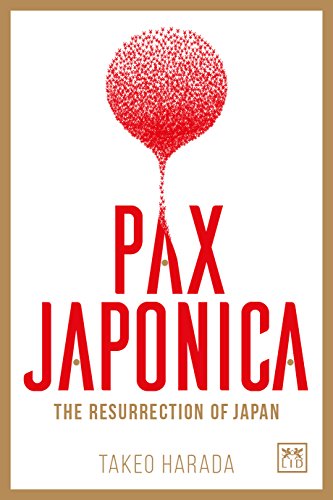
Japan, the world’s third largest economy and its largest creditor nation, has been in crisis for more than two decades. Its economy has been depressed or in recession in much of that period, its banking sector in a critical state, and its public sector burdened by recurring fiscal deficits and mounting debt. Today, the hegemonic role in global trade and financial markets has been assumed by the USA and China. Yet, this book argues that a possible future Pax Japonica – one in which Japan will overcome its paralyzing debt and once again play a leading role in global finance – can become a reality. Leading international strategist Takeo Harada provides new and astounding insight into Japan’s hidden role as designated controller of large – often secret – funds kept for the purpose of rescuing humankind from ultimate disasters. For this reason, Japan’s role in the global economy can never be under-estimated and remains critical to its progress.
Pax Japonica. The Resurrection of Japan, Takeo HARADA, LID Publishing, 2017

Current interest in regionalism, often referred to as “new regionalism” or NR, is undoubtedly one of the important trends in contemporary international relations. Scholarly attention has been drawn to the creation of a number of regional organisations such as the North Atlantic Free Trade Agreement (NAFTA) and the Common Market of the South (MERCOSUR) that was created in 1991 in South America. Meanwhile, 1989 saw the birth of the Asia Pacific Economic Cooperation (APEC).
The objective of this study is to determine the main characteristics of new regionalism. The second objective is to apply those characteristics to Asia Pacific Economic Cooperation (APEC) to determine whether APEC conforms to new regionalism. To maintain the research objectives, we adopt the new regionalism theory (NRT) as the framework of analysis. The discussion on NRT is divided into three sections. Firstly, definition of new regionalism. Secondly, the development of NR theory from different perspectives, and lastly, definitions of concepts (the features of new regionalism).
The Asia-Pacific Economic Cooperation (APEC). A Study in New Regionalism, 1989-2009, Ramzi BENDEBKA & Ishtiaq HOSSAIN, LAP Lambert Academic Publishing, 2012

Comprendre les véritables rouages de l’économie chinoise pour comprendre le sens des projets d’expansion économique internationale du pays. De nombreuses incompréhensions entre les entreprises chinoises et leurs partenaires étrangers viennent du fait que les premières opèrent dans un cadre déterminé par un modèle économique différent de celui de l’économie de marché classique.
Cet ouvrage propose un éclairage sur le contexte, les acteurs et les méthodes de fonctionnement de ce modèle économique particulier et des entreprises chinoises, à partir de nombreux cas concrets. Il prend comme base de travail le plan China Corp. 2025 établi et diffusé par le gouvernement chinois et qui doit servir de trame à l’ensemble de ses projets économiques, tant dans le pays qu’à l’international.
China Corp. 2025. Dans les coulisses du capitalisme à la chinoise, Jean-François DUFOUR, Maxima, 2019
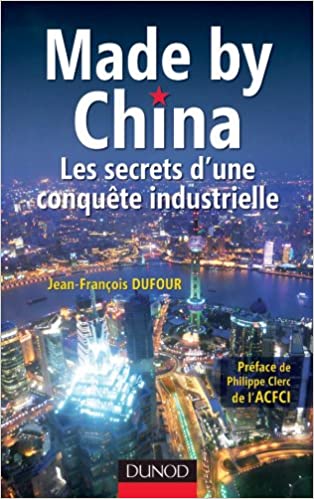
La Chine est-elle une menace pour les économies occidentales? La réponse est clairement oui ! La perception de la Chine comme “usine du monde” est désormais dépassée. Aujourd’hui, une part croissante des réfrigérateurs ou des téléphones ne sont plus seulement des produits made in China mais bien made by China. De grands groupes industriels nationaux conçoivent, développent et fabriquent des produits proprement chinois. Il en ira de même, demain, pour les automobiles et les avions de ligne.
Cet ouvrage, vivant et agréable à lire, retrace le développement fulgurant de ces nouveaux géants lancés à la conquête du marché mondial. Apporter un éclairage, aujourd’hui indispensable, sur les acteurs de premier plan de l’économie chinoise, c’est ce que propose cet essai, incontournable et bien documenté, où chiffres, exemples et anecdotes se conjuguent pour étayer et animer le propos.
Made by China. Les secrets d’une conquête industrielle, Jean-François DUFOUR, Dunod, 2012
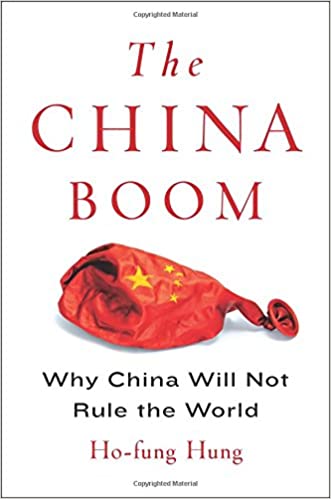
Many thought China’s rise would fundamentally remake the global order. Yet, much like other developing nations, the Chinese state now finds itself in a status quo characterized by free trade and American domination. Through a cutting-edge historical, sociological, and political analysis, Ho-fung Hung details the competing interests and economic realities that temper the dream of Chinese supremacy―forces that are stymieing growth throughout the global South.
Hung focuses on four common misconceptions: that China could undermine orthodoxy by offering an alternative model of growth; that China is radically altering power relations between the East and the West; that China is capable of diminishing the global power of the United States; and that the Chinese economy would restore the world’s wealth after the 2008 financial crisis. His work reveals how much China depends on the existing order and how the interests of the Chinese elites maintain these ties. Through its perpetuation of the dollar standard and its addiction to U.S. Treasury bonds, China remains bound to the terms of its own prosperity, and its economic practices of exploiting debt bubbles are destined to fail. Hung ultimately warns of a postmiracle China that will grow increasingly assertive in attitude while remaining constrained in capability.
The China Boom. Why China Will Not Rule the World, Ho-Fung HUNG, Columbia University Press, 2015
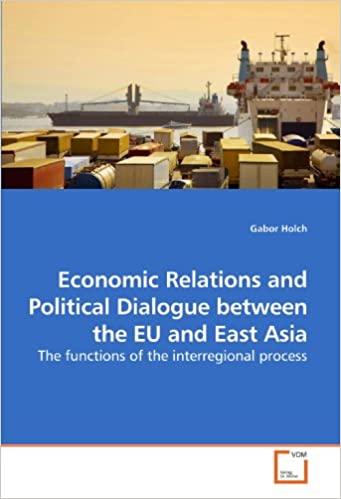
Gabor Holch presents an analysis of one of the latest developments in interregional relations, relations between the EU and East Asia. In spite of their historical ties, interaction between the two regions have been restricted to little more than trade and development projects between certain European nations and their former Asian colonies. The essay deals with the role the European Union can play in the East Asian region. Traditionally, most attention is devoted to the multilateral-intergovernmental relations which were established to provide a regulatory framework for the economic relations and political dialogue between the two regions. The high-level dialogue that arose between politicians of the two regions during the past 20-odd years, however, does not meet the standards of the period following the Cold War.
The essay presents theoretical and empirical material to suggest that the aspects of the East Asia-EU interregional process linking the civil societies of the two regions make a significant contribution to the eventual strengthening of the process in the future.
Economic Relations and Political Dialogue Between the EU and East Asia. The Functions of the Interregional Process, Gabor HOLCH, VDM Verlag, 2009
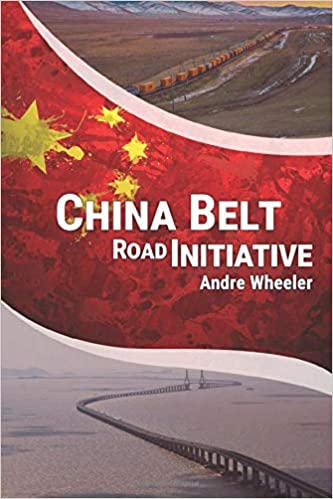
Counter initiatives, such as India/Japan’s ‘Freedom Corridor’ add to options for deciding the most effective and efficient logistics modality. These counter inititaives are seen to be aimed at disrupting China’s growing political and economic influence in the Eurasion region, in particular Asia. It has been said before that whoever controls the ‘Middle Kingdom’ controls the global economy. All of these initiatives are building major connectivity infrastructure, including new inland rail corridors, which connect inland markets and new maritime ports. With increasing rail freight volumes between China and Europe, we see that the BRI is already impacting shipping lines, which are suffering significant losses, both in revenue and volume.
This book, while limited in scope, should invite wider research into the other land corridors of the BRI and add to a greater understanding of the initiative and its impact on trade and foreign policy in the region.
China’s Belt and Road Initiative. The Challenge for the Middle Kingdom Through a New Logistics Paradigm, Andre WHEELER, Independently published, 2018
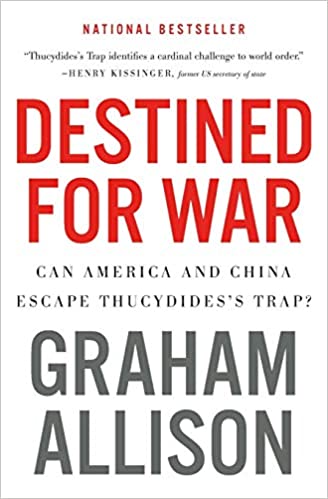
China and the United States are heading toward a war neither wants. The reason is Thucydides’s Trap: when a rising power threatens to displace a ruling one, violence is the likeliest result. Over the past five hundred years, these conditions have occurred sixteen times; war broke out in twelve. Today, as an unstoppable China approaches an immovable America, and both Xi Jinping and Donald Trump promise to make their countries “great again,” the seventeenth case looks grim. A trade conflict, cyberattack, Korean crisis, or accident at sea could easily spark a major war.
In Destined for War, eminent Harvard scholar Graham Allison masterfully blends history and current events to explain the timeless machinery of Thucydides’s Trap—and to explore the painful steps that might prevent disaster today.
Destined For War. Can America and China Escape Thucydides’s Trap ?, Graham ALLISON, Houghton Mifflin Harcourt, 2018

「日産・ルノー提携」の特ダネを1999年にスクープして以来、カルロス・ゴーンを見つめてきたジャーナリストが、その栄光と墜落の軌跡、そして日産社内の権力闘争の実態をあますところなく描いた経済ノンフィクション。
倒産寸前まで追い込まれた日産にルノーから送り込まれたゴーンは、トップ就任からわずか1年半後、過去最高益を叩き出す。
だが、ゴーンには別の顔があった。寵愛する「チルドレン」で配下を固め、意見する者は容赦なく飛ばす。部下に責任を押しつけて更迭し、自分は地位にとどまった。
そして、私物化。ゴーンは私的に購入した金融商品がリーマンショックで18億円もの損失を出した際、一時的にそれを日産に付け替えた。約20億円もの報酬のうちの約半分を退任後に受け取ることにし、有価証券報告書には10億円分しか記載してこなかった。会社のカネで購入した豪華邸宅を私的に利用するなど、公私混同は枚挙に暇がない。
いったいなぜ、ゴーンは道を誤ってしまったのか? ヒントは「歴史」にある。
日産は創業以来、ほぼ20年周期で大きな内紛を起こしてきた。そのつど、「独裁者」と呼ばれる権力者があらわれ、制御不能のモンスターと化した。その独裁者を排除するために新たな権力者を必要とし、新たな権力者がまたモンスターと化していった。
そうした構図が繰り返される背景には、日産が抱えるガバナンスの問題点、そして独裁者をのさばらせた側にも大きな責任があることが浮かび上がってくる。
企業ドキュメントとしての魅力もさることながら、人物ドラマとしても抜群に面白い。
フィクションをしのぐ驚愕の展開!
日産 vs. ゴーン 支配と暗闘の20年 (Nissan vs Ghosn. 20 Years of Domination and Dark Fight), Hisao INOUE, 文藝春秋, 2019

カリスマの腐敗と堕落
歴史はまた繰り返された!
そして今回のゴーンショックにつながる組織の腐蝕はどのように生まれのか? 緊急逮捕されたカルロス・ゴーンがやってくる13年前、日産の経営を凋落させる原因を作った労組問題。日産圏二三万人の頂点に君臨したのが「労働貴族」こと塩路一郎だった。その絶対的権力者に「義憤」を感じ、たった一人立ち上がったサラリーマンがいた。これは個人が会社を変えられるのか、を追ったドキュメントである。著者が墓まで持っていくと決めていた日産自動車「極秘ファイル」の全貌がいま、明らかになる。たった1人の「義憤」は会社を変えられたか?
日産自動車 極秘ファイル (The Top Secret Files of Nissan), Noriaki KAWAKATSU, プレジデント社, 2018
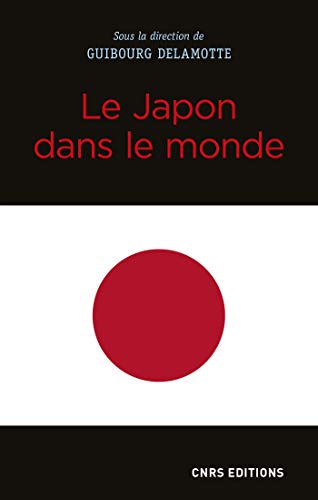
Le Japon entretient avec la notion de puissance une relation complexe. Archipel, il inscrit dans sa Constitution de 1946 l’interdiction du maintien d’un potentiel de guerre, ce qui l’arrime durablement au camp occidental dont il a besoin pour assurer sa sécurité. Pourtant, la diplomatie japonaise a toujours réussi à jouir d’une relative autonomie, en partie grâce au miracle économique qu’a connu ce pays. Dès la fin du XIXe siècle en effet, le Japon fait le pari de la modernité jusqu’à devenir la deuxième puissance économique mondiale. Mais en ce début de XXIe siècle, alors qu’il dispose d’un capital sympathie unique au monde, par le biais de sa culture, les défis sont nombreux. Comment préserver la croissance économique dans un contexte de déclin démographique ? Comment forcer la Corée du Nord à renoncer à son programme nucléaire ? Comment contenir la puissance maritime chinoise ? Comment réagir face à une administration américaine protectionniste et un régime chinois supposément libre-échangiste ?
Cet ouvrage offre un panorama du rayonnement du Japon dans le monde et de ses limites. Abordant d’abord les paramètres intérieurs de la puissance japonaise (aspects politiques, économiques et sociaux), l’ouvrage se focalise ensuite sur les défis sécuritaires (nature des menaces régionales) et les réponses apportées (alliance nippo-américaine, relation Japon-Union européenne), pour se concentrer enfin sur les instruments multilatéraux de la diplomatie de puissance japonaise.
Le Japon dans le monde, Guibourg DELAMOTTE (ed.), CNRS Editions, 2019
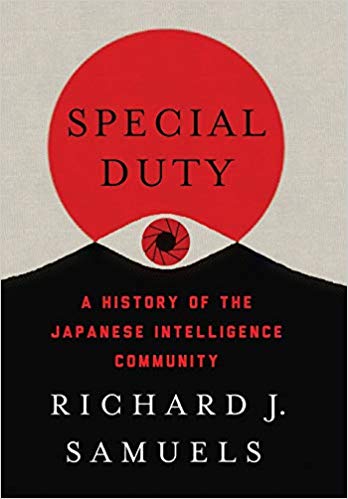
The prewar history of the Japanese intelligence community demonstrates how having power over much, but insight into little can have devastating consequences. Its postwar history ― one of limited Japanese power despite growing insight ― has also been problematic for national security.
In Special Duty, Richard J. Samuels dissects the fascinating history of the intelligence community in Japan. Looking at the impact of shifts in the strategic environment, technological change, and past failures, he probes the reasons why Japan has endured such a roller-coaster ride when it comes to intelligence gathering and analysis, and concludes that the ups and downs of the past century ― combined with growing uncertainties in the regional security environment ― have convinced Japanese leaders of the critical importance of striking balance between power and insight. Using examples of excessive hubris and debilitating bureaucratic competition before the Asia-Pacific War, the unavoidable dependence on US assets and popular sensitivity to security issues after World War II, and the tardy adoption of image-processing and cyber technologies, Samuels’ bold book highlights the century-long history of Japan’s struggles to develop a fully functioning and effective intelligence capability, and makes clear that Japanese leaders have begun to reinvent their nation’s intelligence community.
Special Duty. A History of the Japanese Intelligence Community, Richard J. SAMUELS, Cornell University Press, 2019

In 1920s Shanghai, Zhou Enlai founded the first Chinese communist spy network, operating in the shadows against nationalists, Western powers and the Japanese. The story of Chinese spies has been a global one from the start. Unearthing previously unseen papers and interviewing countless insiders, Roger Faligot’s astonishing account reveals nothing less than a century of world events shaped by Chinese spies. Working as scientists, journalists, diplomats, foreign students and businessmen, they’ve been everywhere, from Stalin’s purges to 9/11. This murky world has swept up Ho Chi Minh, the Clintons and everyone in between, with the action moving from Cambodia to Cambridge, and from the Australian outback to the centres of Western power.
This fascinating narrative exposes the sprawling tentacles of the world’s largest intelligence service, from the very birth of communist China to Xi Jinping’s absolute rule today.
Chinese Spies. From Chairman Mao to Xi Jinping, Roger FALIGOT, Hurst, 2019

In the “Great Game” of the 21st century―gaining leadership and influence in Asia―the United States is rapidly being outflanked by China, which is investing in infrastructure, connectivity, and supply chains on an unprecedented global scale. In this first book to use China’s Belt and Road Initiative, previously known as China’s New Silk Road, as a point of departure to explain why and how China is about to supersede America with regard to influence in Asia, Sarwar Kashmeri argues that the United States has a narrow window of opportunity to find a way to fit into a world in which the rules of the game are increasingly set by China. U.S. opposition to the Belt and Road Initiative is doomed to failure, so America must find creative ways to engage China strategically, and he warns that the window to do so is closing fast.
The Belt and Road Initiative is China’s ambitious project to connect itself to more than 70 countries in Central Asia, Europe, Africa, and the Middle East through new roads, rails, ports, sea lanes, and air links. This cornerstone of Chinese foreign policy under President Xi Jinping is positioning China at the center of over half of world trade, and the loss of American influence and power could well lead to the end of the postwar liberal world order. Far more than merely an infrastructure investment, the Belt and Road Initiative is a masterful grand strategy to create nothing less than a new world order based on the Chinese model of government and its financial institutions. Yet, as the passing of the baton of world leadership takes place, the United States seems curiously incapable or uninterested in devising a counterstrategy. Even though the United States will no longer have the largest economy in the world, it will still be a powerful and rich country with global alliances.
China’s Grand Strategy. Weaving a New Silk Road to Global Primacy, Sarwar A. KASHMERI, Praeger, 2019
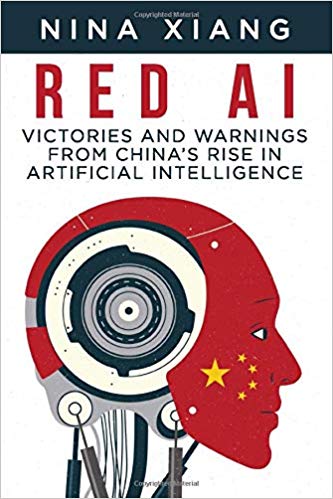
Red AI: Victories and Warnings From China’s Rise In Artificial Intelligence is the definitive book on one of the most important topics of our time. It is the first thorough investigation of the Chinese AI industry and an insight-filled, intriguing narrative that will shed light on China AI for global policymakers, business and technology professionals. This is the first book where readers gain an insider’s peek into the much-hyped industry across all the major segments of AI’s commercial applications in China. From facial recognition, surveillance, speech recognition, autonomous driving, robotics, AI chips, healthcare, financial services, and other sectors, the book unveils what is really happening behind the scenes in all these areas.
Author Nina Xiang, a veteran China-based tech journalist who has tracked the Chinese AI industry for years, interviewed hundreds of people and traveled to dozens of Chinese cities to bring the industry alive with vivid detail. Nina Xiang presents a sweeping overview of an industry that is still largely misunderstood.
Red A.I. : Victories and Warnings From China’s Rise in Artificial Intelligence, Nina XIANG, Independently published, 2019

Five billion people, two-thirds of the world’s mega-cities, one-third of the global economy, two-thirds of global economic growth, thirty of the Fortune 100, six of the ten largest banks, eight of the ten largest armies, five nuclear powers, massive technological innovation, the newest crop of top-ranked universities. Asia is also the world’s most ethnically, linguistically and culturally diverse region of the planet, eluding any remotely meaningful generalization beyond the geographic label itself. Even for Asians, Asia is dizzying to navigate.
Whether you gauge by demography, geography, economy or any other metric, Asia is already the present – and it is certainly the future. It is for this reason that we cannot afford to continue to get Asia so wrong. The Future Is Asian accurately shows Asia from the inside-out, telling the story of how this mega-region is coming together and reshaping the entire planet in the process.
The Future Is Asian. Global Order in the Twenty-First Century, Parag KHANNA, Weidenfeld & Nicolson, 2019
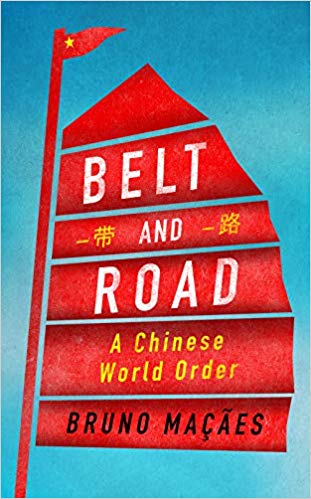
China’s Belt and Road strategy is acknowledged to be the most ambitious geopolitical initiative of the age. Covering almost seventy countries by land and sea, it will affect every element of global society, from shipping to agriculture, digital economy to tourism, politics to culture. Most importantly, it symbolizes a new phase in China’s ambitions as a superpower: to remake the world economy and crown Beijing as the new center of capitalism and globalization.
Bruno Maçães traces this extraordinary initiative’s history, highlighting its achievements to date, and its staggering complexity. He asks whether Belt and Road is about more than power projection and profit. Might it herald a new set of universal political values, to rival those of the West? Is it, in fact, the story of the century?
Belt and Road. A Chinese World Order, Bruno MAÇÃES, Hurst, 2019

China and Japan have cultural and political connections that stretch back fifteen hundred years. But today their relationship is strained. China’s military buildup deeply worries Japan, while Japan’s brutal occupation of China in World War II remains an open wound. In recent years less than ten percent of each population had positive feelings toward the other, and both countries insist that the other side must deal openly with its history before relations can improve.
From the sixth century, when the Japanese adopted core elements of Chinese civilization, to the late twentieth century, when China looked to Japan for a path to capitalism, Ezra Vogel’s China and Japan examines key turning points in Sino-Japanese history. Throughout much of their past, the two countries maintained deep cultural ties, but China, with its great civilization and resources, had the upper hand. Japan’s success in modernizing in the nineteenth century and its victory in the 1895 Sino-Japanese War changed the dynamic, putting Japan in the dominant position. The bitter legacy of World War II has made cooperation difficult, despite efforts to promote trade and, more recently, tourism.
Vogel underscores the need for Japan to offer a thorough apology for the war, but he also urges China to recognize Japan as a potential vital partner in the region. He argues that for the sake of a stable world order, these two Asian giants must reset their relationship, starting with their common interests in environmental protection, disaster relief, global economic development, and scientific research.
China and Japan: Facing History, Ezra F. VOGEL, The Belknap Press of Harvard University Press, 2019
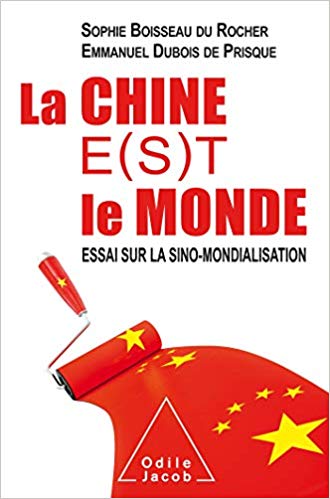
Promise à la première place mondiale, la Chine entend jouer un rôle décisif sur la scène internationale. Quelle est sa vision et comment aborde-t-elle le monde et la mondialisation ? Avec quelles conséquences pour l’Occident et l’Europe ?
Écrit par deux fins connaisseurs de la Chine et de l’Asie du Sud-Est, ce livre montre comment le président Xi Jinping et le Parti communiste chinois ont recyclé l’antique formule du « Tianxia » – qui désigne traditionnellement « tout ce qui est sous le ciel » – pour placer la Chine au centre des flux mondiaux. Il explique aussi comment elle mobilise toutes ses ressources (influence économique, attrait de sa culture, propagande et intimidation) pour transformer les règles du jeu dans des domaines aussi divers que le droit, les normes industrielles, l’environnement, l’alimentation ou la recherche universitaire. Ce faisant, Pékin modifie à son avantage un système international largement dessiné par l’Occident.
Dès lors se pose une question : l’ambition chinoise n’est-elle pas un risque, d’abord pour les Chinois eux-mêmes, mais aussi pour le reste du monde et les biens communs de l’humanité ?
La Chine e(s)t le Monde. Essai sur la sino-mondialisation, Sophie BOISSEAU DU ROCHER & Emmanuel DUBOIS DE PRISQUE, Odile Jacob, 2019
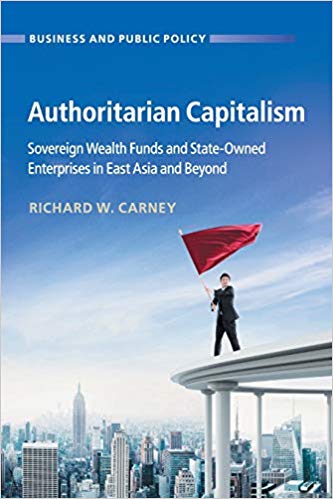
After 1945, the liberal-democratic model of capitalism spread across the globe, ultimately prevailing over communism. Over the past two decades, a new statist-authoritarian model has begun diffusing across Asia. Rather than rejecting capitalism, authoritarian leaders harness it to uphold their rule. Based on extensive research of East Asia’s largest corporations and sovereign wealth funds, this book argues that the most aggressive version of this model does not belong to China. Rather, it can be found in Malaysia and Singapore. Although these countries are small, the implications are profound because one-third of all countries in the world possess the same type of regime. With an increasing number of these authoritarian regimes establishing sovereign wealth funds, their ability to intervene in the corporate sectors of other countries is rapidly expanding.
Authoritarian Capitalism. Sovereign Wealth Funds and State-Owned Enterprises in East Asia and Beyond, Richard W. CARNEY, Cambridge University Press, 2018

In AI Superpowers, Kai-fu Lee argues powerfully that because of these unprecedented developments in AI, dramatic changes will be happening much sooner than many of us expected. Indeed, as the US-Sino AI competition begins to heat up, Lee urges the US and China to both accept and to embrace the great responsibilities that come with significant technological power. Most experts already say that AI will have a devastating impact on blue-collar jobs. But Lee predicts that Chinese and American AI will have a strong impact on white-collar jobs as well. Is universal basic income the solution? In Lee’s opinion, probably not. But he provides a clear description of which jobs will be affected and how soon, which jobs can be enhanced with AI, and most importantly, how we can provide solutions to some of the most profound changes in human history that are coming soon.
AI Superpowers. China, Silicon Valley, and the New World Order, Kai-Fu LEE, Houghton Mifflin Harcourt, 2018
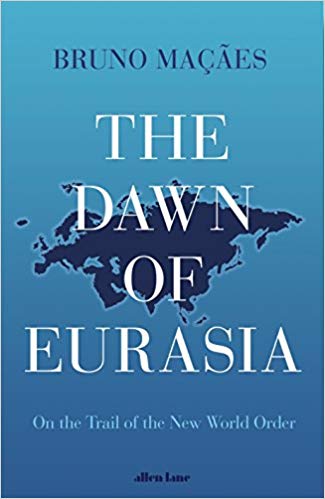
In this original and timely book, Bruno Maçães argues that the best word for the emerging global order is ‘Eurasian’, and shows why we need to begin thinking on a super-continental scale. While China and Russia have been quicker to recognise the increasing strategic significance of Eurasia, even Europeans are realizing that their political project is intimately linked to the rest of the supercontinent – and as Maçães shows, they will be stronger for it.
Weaving together history, diplomacy and vivid reports from his six-month overland journey across Eurasia from Baku to Samarkand, Vladivostock to Beijing, Maçães provides a fascinating portrait of this shifting geopolitical landscape. As he demonstrates, we can already see the coming Eurasianism in China’s bold infrastructure project reopening the historic Silk Road, in the success of cities like Hong Kong and Singapore, in Turkey’s increasing global role and in the fact that, revealingly, the United States is redefining its place as between Europe and Asia.
An insightful and clarifying book for our turbulent times, The Dawn of Eurasia argues that the artificial separation of the world’s largest island cannot hold, and the sooner we realise it, the better.
The Dawn of Eurasia. On the Trail of the New World Order, Bruno MAÇÃES, Penguin Random House, 2018

Un tableau vivant et synthétique de l’univers guerrier de la Chine. À l’ombre de la Grande muraille, un peuple en armes veille sur des frontières qui s’étirent sur des dizaines de milliers de kilomètres. Entre le XVIe siècle et le IIIe siècle av. J.-C., la Chine multiplie les conquêtes et étend peu à peu son immense empire. Comment une telle prouesse a-t-elle été possible ?
C’est ce que nous dévoile Jean Lévi, qui dresse le portrait d’une Chine en guerre, depuis les premières sociétés guerrières jusqu’aux royaumes combattants. Mobilisant des centaines de milliers d’hommes, les armées chinoises développent alors une véritable science de l’intendance, de la topographie et de la manoeuvre. Pour nourrir ces bouches, armer ces bras et protéger ces torses, pourvoir à l’acheminement des vivres et des équipements, l’État guerrier et la société civile en viennent à fusionner, prémisse d’une nouvelle forme de bureaucratie totalitaire. Parallèlement, une pensée originale de l’art du combat émerge, dont Sun Tzu est l’illustre représentant. Celle-ci interroge la légitimité de la guerre, jugée profondément « immorale » dans son essence, rejoignant ainsi des préoccupations étonnement modernes. Plans de batailles, équipement militaire, tactique, entraînement, chaîne de commandement, découvrez les racines des pratiques martiales et de la pensée stratégique de l’Empire du milieu.
La Chine en guerre. Vaincre sans ensanglanter la lame, Jean LEVI, Editions Arkhé, 2018

Less than a decade ago, China did not have a single high-speed train in service. Today, it owns a network of 14,000 miles of high-speed rail, far more than the rest of the world combined. Now, China is pushing its tracks into Southeast Asia, reviving a century-old colonial fantasy of an imperial railroad stretching to Singapore; and kicking off a key piece of the One Belt One Road initiative, which has a price tag of $1 trillion and, reaches inside the borders of more than 60 countries.
The Pan-Asia Railway portion of One Belt One Road could transform Southeast Asia, bringing shiny Chinese cities, entire economies, and waves of migrants where none existed before. But if it doesn’t succeed, that would be a cautionary tale about whether a new superpower, with levels of global authority unimaginable just a decade ago, can pull entire regions into its orbit simply with tracks, sweat, and lots of money. Journalist Will Doig traveled to Laos, Thailand, Malaysia, and Singapore to chronicle the dramatic transformations taking place – and to find out whether ordinary people have a voice in this moment of economic, political, and cultural collision.
High-speed Empire. Chinese Expansion and the Future of Southeast Asia, Will DOIG, Columbia Global Reports, 2018
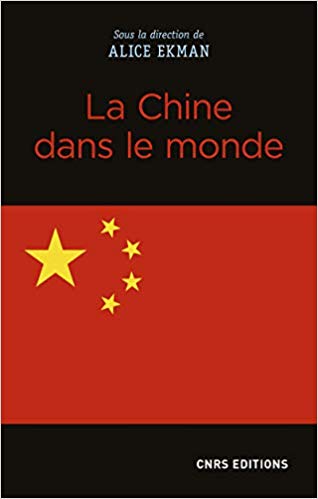
Aujourd’hui, les initiatives internationales de la Chine se multiplient et se diversifient : la Chine investit dans les infrastructures de transport ou de télécommunication à l’étranger, maintient ses revendications territoriales et maritimes, ouvre de nouvelles bases militaires, crée de nouvelles institutions multilatérales, renforce son réseau de médias en langues étrangères… Xi Jinping a définitivement tourné la page de l’approche « profil bas » de la politique étrangère mise en place par Deng Xiaoping au lendemain de la révolution culturelle, dont l’objectif premier était de sortir le pays de la pauvreté. Si le développement économique demeure une priorité de la diplomatie chinoise – face aux écarts de développement persistant au sein du territoire national et au ralentissement de la croissance –, d’autres enjeux préoccupent également Pékin aujourd’hui : l’approvisionnement en énergie et matières premières, la protection des ressortissants chinois à l’étranger ou encore la lutte contre le terrorisme.
Huit des meilleurs spécialistes francophones de la Chine se sont réunis pour analyser chacun de ces enjeux et la manière dont la Chine y répond actuellement. Les nouvelles initiatives internationales de la Chine constituent-elles uniquement une réponse à ces enjeux, ou sont-elles également motivées par d’autres objectifs ? Cet ouvrage pose en définitive une question essentielle : quelles sont les ambitions de la politique étrangère chinoise ? Sa lecture permet de mieux comprendre la façon dont la Chine perçoit le monde, et surtout, le rôle qu’elle souhaite y jouer.
La Chine dans le monde, Alice EKMAN (ed.), CNRS Editions, 2018
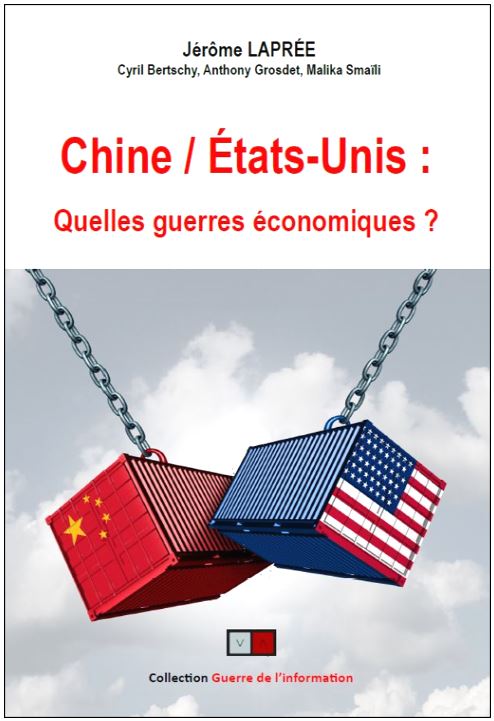
Alors que les relations commerciales s’enveniment entre les États-Unis et la Chine au cours de l’année 2018, il n’y a pour ainsi dire pas de vision d’ensemble des tensions économiques qui agitent les deux pays. Il n’y a pas de clés d’interprétation communes. Les ambitions de la Chine la portent à vouloir redevenir la puissance dominante qu’elle a été au cours de l’Histoire. Pour cela, elle dispose de plusieurs outils et c’est avec un succès certain qu’elle utilise l’économie comme levier d’accroissement de puissance. Dans ce domaine, elle se retrouve face-à-face avec les États-Unis sur de nombreux terrains. Si la confrontation est intense et ouverte sur certains sujets, sur d’autres l’opposition n’est ni systématique, ni nécessairement frontale. Le terme de « guerre » économique est souvent un raccourci qui occulte la réalité et la diversité de ce qui se déroule. Cet ouvrage se propose d’aller plus loin.
Si rapport de force il y a, alors il peut se caractériser. L’acteur qui prend l’initiative, l’intention stratégique, le lieu d’exercice et la dynamique du rapport de force, les modalités du rapport de force sont autant de critères pour décortiquer les événements en cours. Ces critères ont été appliqués à une douzaine de cas, issus de quatre secteurs structurants de l’économie mondiale : les infrastructures physiques du commerce international, les systèmes financier et juridique, les matières premières (avec une incursion en Afrique), les nouvelles technologies. Des sujets peu connus seront examinés, comme les systèmes de paiement internationaux et le projet de canal du Nicaragua.
Chine / Etats-Unis: quelles guerres économiques ?, Jérôme LAPREE, Cyril BERTSCHY, Anthony GROSDET & Malika SMAILI, V.A. Editions, 2018
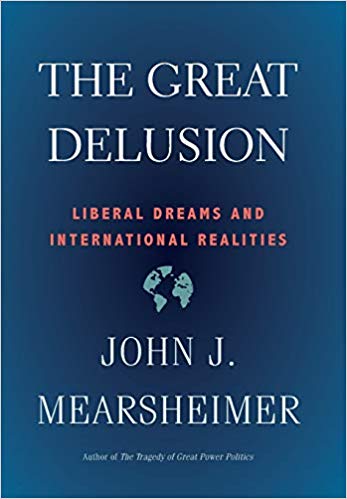
It is widely believed in the West that the United States should spread liberal democracy across the world, foster an open international economy, and build international institutions. The policy of remaking the world in America’s image is supposed to protect human rights, promote peace, and make the world safe for democracy. But this is not what has happened. Instead, the United States has become a highly militarized state fighting wars that undermine peace, harm human rights, and threaten liberal values at home.
In this major statement, the renowned international-relations scholar John Mearsheimer argues that liberal hegemony—the foreign policy pursued by the United States since the Cold War ended—is doomed to fail. It makes far more sense, he maintains, for Washington to adopt a more restrained foreign policy based on a sound understanding of how nationalism and realism constrain great powers abroad. The Great Delusion is a lucid and compelling work of the first importance for scholars, policymakers, and everyone interested in the future of American foreign policy.
The Great Delusion. Liberal Dreams and International Realities, John J. MEARSHEIMER, Yale University Press, 2018
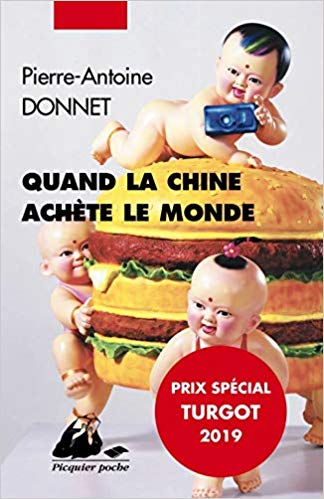
La Chine est partie sans complexe à la conquête du monde. Assise sur des réserves de change colossales de près de 3 000 milliards de dollars, elle s’est mise à acheter partout sur la planète: dans l’industrie automobile, les aéroports et le sport, les terres agricoles, les grands vins de Bordeaux, la dette américaine…
Pierre-Antoine Donnet dresse un état des lieux de ce mouvement qui a pour nom en chinois zouchuqu, c’est-à-dire «sortir des frontières». Son enquête s’appuie sur une analyse précise, accessible et prédictive des faits et des chiffres, pour comprendre les mécanismes et les enjeux d’un renversement des forces économiques où la Chine est en passe de devenir la première puissance économique mondiale.
Quand la Chine achète le monde, Pierre-Antoine DONNET, Editions Philippe Picquier, 2018
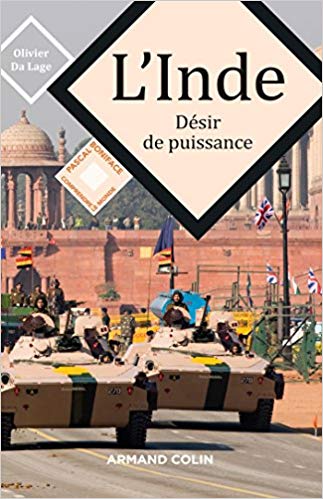
Dès son indépendance en 1947, l’Inde sest identifiée au mouvement des non-alignés, prônant une troisième voie entre lalliance avec les Occidentaux et celle avec le bloc soviétique. Cette époque appartient désormais pratiquement au passé. LInde, dont la population devrait dépasser celle de la Chine vers 2025, se pose désormais en rivale pour devenir la grande puissance de ce XXIe siècle. Ambitionnant de prendre le relais de lEurope et des États-Unis, elle revendique un siège de membre permanent au Conseil de sécurité de l’ONU. Son dynamisme démographique et économique soutient ce désir de puissance, mais les obstacles sont nombreux et son ambitieux pari nest pas encore gagné.
L’Inde. Désir de puissance, Olivier DA LAGE, Armand Colin, 2017

Le pouvoir en Chine est-il si centralisé et tout-puissant ? Quel est le rôle de la propagande ? La lutte contre la corruption est-elle une illusion ? Que signifie la fin de la politique de l’enfant unique ? Pourquoi la censure se renforce-t-elle ? Que pèse la dette chinoise ? L’APL est-elle vraiment la deuxième armée du monde ? Quelles sont ses ambitions maritimes ? La Chine est-elle une puissance nucléaire responsable ? En quelques décennies, la Chine est devenue la deuxième puissance économique mondiale. L’ampleur de son marché, ses échanges, mais aussi ses choix stratégiques régionaux ou environnementaux, orientent l’avenir du monde. Pourtant, le ralentissement de la croissance économique constaté depuis 2015 a entraîné un brutal retour de balancier. Après avoir été encensé comme le « sauveur » de nos économies en crise, le modèle chinois se trouve soudain remis en cause.
En 100 questions/réponses, Valérie Niquet dresse un tableau contrasté et parfois inquiétant de la puissance économique, culturelle, démographique, militaire que représente la Chine aujourd’hui. Elle éclaire le fonctionnement du système chinois et analyse la réalité d’un pays, objet d’une fascination sans recul. Avec ses promesses, ses signes de faiblesse et ses failles inéluctables.
La puissance chinoise en 100 questions, Valérie NIQUET, Tallandier, 2017
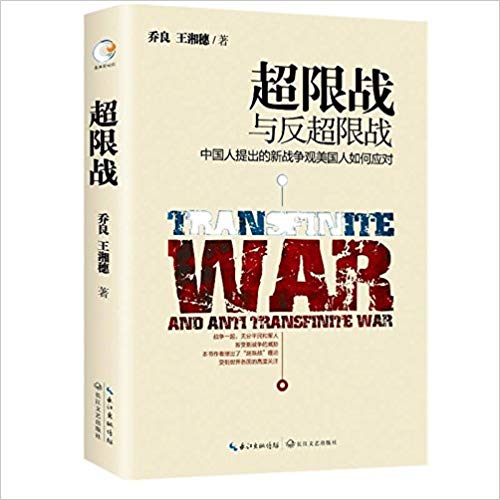
Unrestricted Warfare is co-authored by major general Qiao Liang, a famous military critic and Wang Xianghui, with sales exceeding millions of copies. Besides reserving the content of the original edition, this new edition contains the specific methods of American troops, government, academic world and business circles for dealing with unrestricted warfare. It fully shows unrestricted warfare, the Chinese new war outlook and American’s counter unrestricted warfare strategies, foreseeing the war scenario in the military, economics, finance, the internet, natural resources, anti-terrorism and many other areas.
Unrestricted Warfare, QIAO Liang & WANG Xiang Sui, Changjiang Literature Press, 1st Edition, 2016
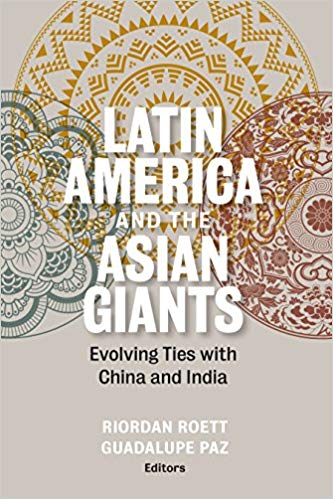
How an evolving relationship with China and India is changing Latin America’s political and economic dynamics.
In the years since China has adopted a “going global” strategy to promote its overseas investment, expand export markets, and gain much-needed access to natural resources abroad, Sino–Latin American relations have both deepened and broadened at an unexpectedly rapid pace. The main driver behind this sea change in bilateral relations has been economic complementarity, with resource-rich countries in Latin America exporting primary goods to the Asian giants’ growing market and China exporting manufactured goods back into the region. In recent years, Sino–Latin American relations have matured considerably, becoming far more nuanced and multifaceted than ever before.
India is a relatively new player in the region, but has slowly strengthened its ties. As one of Asia’s largest markets, it offers interesting parallels to the Chinese case. Will Indo–Latin American ties follow a similar path? The main areas of growth include trade and investment, mining, energy, information technology, motor vehicle production, and pharmaceuticals. To what extent these changing dynamics will redefine Latin America’s relations with India is a question of increasing relevance for policymakers.
This volume offers a review of key cross-regional trends and critical policy issues involving the changing relationship between these two Asian giants and Latin America. Selected country case studies—Argentina, Brazil, Chile, and Mexico—provide a more in-depth analysisof the implications of China’s and India’s evolving interaction with the region.
Latin America and the Asian Giants. Evolving Ties with China and India, Riordan ROETT & Guadalupe PAZ (ed.), Brookings Institution Press, 2016
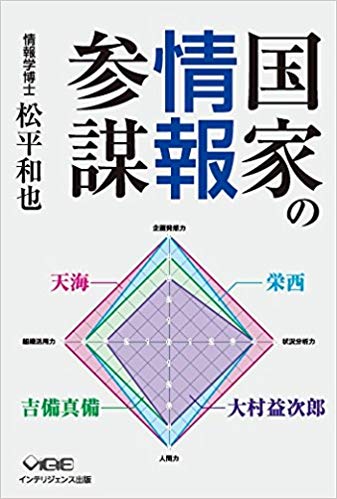
江戸時代から現代に至るまでの情報参謀の変遷とあり方を膨大は資料を基に紐解くことで、優れた情報収集・分析・評価能力、つまりインテリジェンスがもたらす優れた意思決定の在り方を著者の優れた洞察力で集大成した内容。
国家の情報参謀 (National Intelligence Advisors), Kazuya MATSUDAIRA, インテリジェンス出版, 2016
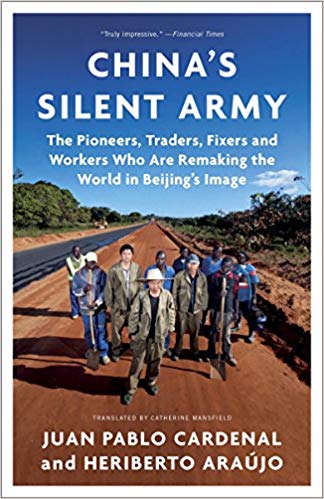
The first book to examine the unprecedented growth of China’s economic investment in the developing world, its impact at the local level, and a rare hands-on picture of the role of ordinary Chinese in the juggernaut that is China, Inc.
Beijing-based journalists Juan Pablo Cardenal and Heriberto Araújo crisscrossed the globe from 2009-2011 to investigate how the Chinese are literally making the developing world in their own image. What they discovered is a human story, an economic story, and a political story, one that is changing the course of history and that has never been explored, or reported, in depth and on the ground.
The “silent army” to which the authors refer is made up of the many ordinary Chinese citizens working around the world—in the oil industry in Kazakhstan, mining minerals in the Democratic Republic of Congo, building dams in Ecuador, selling hijabs in Cairo—who are contributing to China’s global dominance while also leaving their mark in less salutary ways. With original and fresh reporting as well as top-notch writing, China’s Silent Army takes full advantage of the Spanish-speaking authors’ outsider experience to reveal China’s influence abroad in all its most vital implications—for foreign policy, trade, private business, and the environment.
China’s Silent Army. The Pioneers, Traders, Fixers and Workers Who Are Remaking the World in Beijing’s Image, Juan Pablo CARDENAL & Heriberto ARAUJO, Broadway Books, 2014

The updated edition of this classic treatise on the behavior of great powers takes a penetrating look at the question likely to dominate international relations in the twenty-first century: Can China rise peacefully? In clear, eloquent prose, John Mearsheimer explains why the answer is no: a rising China will seek to dominate Asia, while the United States, determined to remain the world’s sole regional hegemon, will go to great lengths to prevent that from happening. The tragedy of great power politics is inescapable.
The Tragedy of Great Power Politics, John J. MEARSHEIMER, W.W. Norton & Company, Updated Edition, 2014
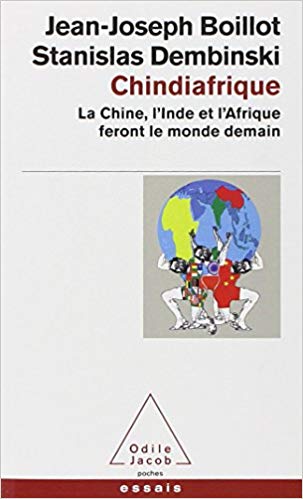
À quoi ressemblera le monde, en 2030 ? Cet essai de prospective montre comment les trois géants – Chine, Inde, Afrique – vont renforcer leurs complémentarités et former un nouveau triangle de développement. Analysant les conséquences de cette recomposition, Jean-Joseph Boillot et Stanislas Dembinski mettent au jour ses risques et ses opportunités pour l’Occident : dynamisme économique et culturel des diasporas, diffusion d’un low cost de qualité, business models frugaux et dont pourraient bien s’inspirer les pays riches. On voit ainsi se dessiner un monde où les changements sont infiniment plus rapides et plus massifs qu’ils ne l’ont été pour notre révolution industrielle. Et si la Chine se place en tête de cette course à la croissance, les auteurs montrent qu’elle est en voie de stabilisation, tandis que l’Inde et l’Afrique devraient révéler tout leur potentiel dans les prochaines décennies. Un décalage dont l’Europe devrait savoir jouer afin de contrebalancer une Chine trop hégémonique.
Chindiafrique. La Chine, l’Inde et l’Afrique feront le monde demain, Jean-Joseph BOILLOT & Stanislas DEMBINSKI, Odile Jacob, 2014
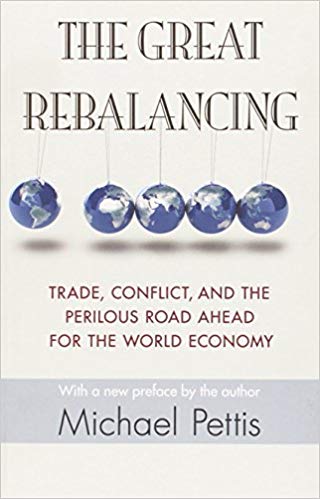
China’s economic growth is sputtering, the Euro is under threat, and the United States is combating serious trade disadvantages. Another Great Depression? Not quite. Noted economist and China expert Michael Pettis argues instead that we are undergoing a critical rebalancing of the world economies. Debunking popular misconceptions, Pettis shows that severe trade imbalances spurred on the recent financial crisis and were the result of unfortunate policies that distorted the savings and consumption patterns of certain nations. Pettis examines the reasons behind these destabilizing policies, and he predicts severe economic dislocations that will have long-lasting effects.
Demonstrating how economic policies can carry negative repercussions the world over, The Great Rebalancing sheds urgent light on our globally linked economic future.
The Great Rebalancing. Trade, Conflict, and the Perilous Road Ahead for the World Economy, Michael PETTIS, Princeton University Press, 2013

Japan is on the verge of a sea change. After more than fifty years of national pacifism and isolation including the “lost decade” of the 1990s, Japan is quietly, stealthily awakening. As Japan prepares to become a major player in the strategic struggles of the 21st century, critical questions arise about its motivations. What are the driving forces that influence how Japan will act in the international system? Are there recurrent patterns that will help explain how Japan will respond to the emerging environment of world politics?
American understanding of Japanese character and purpose has been tenuous at best. We have repeatedly underestimated Japan in the realm of foreign policy. Now as Japan shows signs of vitality and international engagement, it is more important than ever that we understand the forces that drive Japan. In Japan Rising, renowned expert Kenneth Pyle identities the common threads that bind the divergent strategies of modern Japan, providing essential reading for anyone seeking to understand how Japan arrived at this moment—and what to expect in the future.
Japan Rising. The Resurgence of Japanese Power and Purpose, Kenneth B. PYLE, Public Affairs, 2007
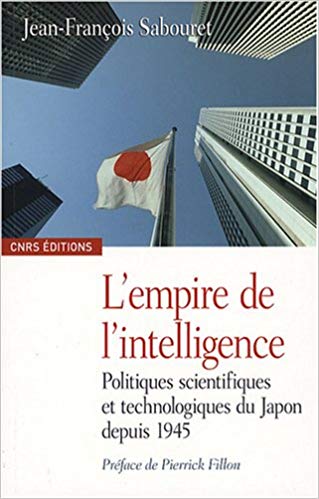
Mythique METI ou MITI ! Et si l’économie n’était que la guerre continuée par d’autres moyens ? En devenant le Ministry of Economy, Trade and Industry, l’ancien Ministry of International Trade and Industry n’a pas dérogé à la mission qui lui avait été fixée en 1949 : faire en sorte que le Japon redevienne une puissance mondiale en gagnant la bataille du Marché. Articulant l’industrie et la recherche, l’usine et l’université, le négoce et la communication, encadrant les multinationales comme les petits commerces, élaborant des stratégies communes à la fonction publique et à la classe politique, au patronat et aux syndicats, assurant une veille sur les marchés étrangers et les nouvelles technologies, surveillant les échanges extérieurs et intérieurs, favorisant le développement des technopôles, cet organisme tient lieu de chef d’orchestre de la croissance japonaise. Par quel paradoxe une telle planification libérale explique-t-elle le « miracle japonais » ?
Cette étude sans précédent, qui est une brève histoire du Miracle économique japonais depuis la guerre, réunit les meilleurs spécialistes de la question et en donne ici toutes les clés. La science et la technologie (ou plutôt comme le disent les Japonais « la science technologie » en un seul mot tant les deux sont indissociables pour eux) sont au cœur de cette bataille des neurones. Un livre d’une actualité aiguë.
L’empire de l’intelligence. Politiques scientifiques et technologiques du Japon depuis 1945, Jean-François SABOURET (ed.), CNRS Editions, 2007

This fascinating book focuses on Kyoto high-tech companies that have captured leading market share with globally preeminent technologies and yet have been able to maintain their robust profitability even under Japan’s current prolonged recession. The book aims to uncover the secrets of success behind such companies as Kyocera Corp., Omron Corp., Murata Manufacturing Co., Rohm Co. and Horiba Ltd. and their management systems, generally termed “the Kyoto Model“. The unique features of the model are detailed: the history and founding of these high-tech companies, their management attitude giving priority to corporate philosophies, their organizational management, the emphasis they put on R&D management and production technologies, their personnel management, and finally, their philanthropic activities. The Kyoto Model, with its high technology-oriented management system, is a useful case study and tool for Japan’s R&D ventures.
The Kyoto Model. The Challenge of Japanese Management Strategy Meeting Global Standards, Akira ISHIKAWA & Koji TANAKA, World Scientific, 2005

Singapore’s former Senior Minister Lee Kuan Yew provides an account of his personal and political life and provides a blow-by-blow chronicle of his dealings with political groups and leaders, both Malaysian and international, on the road to independence.
The Singapore Story. Memoirs of Lee Kuan Yew, LEE Kuan Yew, Prentice Hall, 1998

“I have spent my whole professional life as an international economist thinking and writing about economic geography, without being aware of it“, begins Paul Krugman in the readable and anecdotal style that has become a hallmark of his writings. Krugman observes that his own shortcomings in ignoring economic geography have been shared by many professional economists, primarily because of the lack of explanatory models. In Geography and Trade he provides a stimulating synthesis of ideas in the literature and describes new models for implementing a study of economic geography that could change the nature of the field. Economic theory usually assumes away distance. Krugman argues that it is time to put it back – that the location of production in space is a key issue both within and between nations.
Geography and Trade, Paul KRUGMAN, Leuven University Press, 1991

Ce qu’on voit et ce qu’on ne voit pas, ou L’économie politique en une leçon, Frédéric BASTIAT, Hachette Livre, 5ème édition, 1879
Be First to Comment